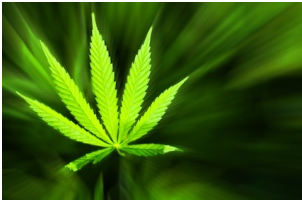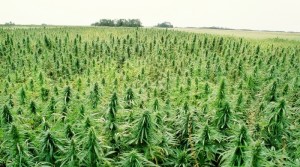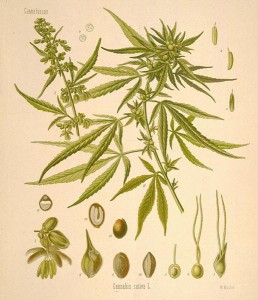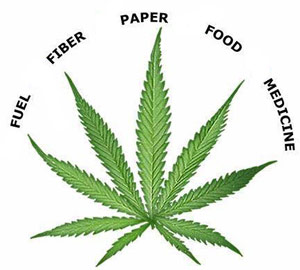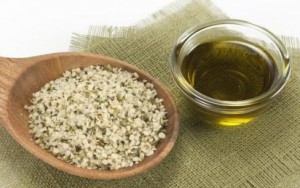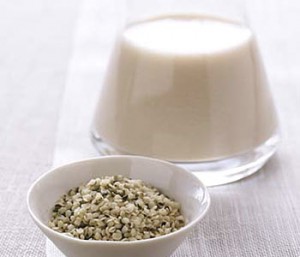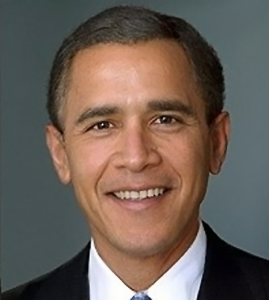via Sam Gandy
Hemp History
Cannabis is utterly unique among plants in it’s incredibly versatility and what is has to offer Mankind. It is an incredible gift from Nature. No other plant has so many potential uses, it having over 25,000. It was one of the earliest domesticated plants and has been used for at least 12,000 years by many civilisations, in Asia and Europe, and following such a long association with Man it has become something of a ruderal species, thriving in disturbed areas influenced by human activity. The oldest piece of material known to Man is a piece of Mesopotamian hemp fabric was dated to 8,000 BC, with records of hemp farming going back 5,000 years in China. Hemp was used to make the first paper, in China it was being used for this purpose 2,000 years ago.
Hemp production peaked in England from 800 – 1000 AD. In the early sixteenth century, after a slackening of interest, hemp was reintroduced and its growth recommended, with large quantities required by the English navy. Immigrants into England during this time were encouraged to grow hemp or pay taxes. Queen Elizabeth I decreed that hemp be grown on farmer’s land, and Henry the Eighty ordered his subjects to grow hemp. For centuries previously hemp has been grown as a food source, and as a material used to make clothes, sails, rope, fishing nets, shoes and an early form of paper.
A few hundred years ago, hemp was viewed in a very different way to the way it is now. Refusal to grow hemp in the US during the 17th and 18th centuries was against the law, and in the 1760’s in Virginia you could be jailed for this! George Washington, Thomas Jefferson and the other founding fathers were big fans of hemp, the original American flag was made of hemp and the original drafts of the Declaration of Independence and the Constitution were written on hemp.
In 1812 a war was partly fought over hemp. The French, headed by Napoleon, allied with the US and declared war on Russia and its ally Britain. Russia was supplying hemp to Britain which among other things it used in the construction of its naval sails. Napoleon marched on Moscow but underestimated the ferocity of the Russian winter and was soon defeated.
For over a century, hemp was legal tender to pay taxes in the US. In 1942 at the height of the Second World War the US government strongly encouraged hemp production to assist with the war effort; with the US Department of Agriculture producing a film entitled “Hemp For Victory”. This was denied by them afterwards but evidence for this exists in the Library of Congress.
Hemp Politics
Hemp and marijuana were banned in the US under the Marihuana Tax act of 1937. This may have worked in the favour of commercial powers at the time, and racist propaganda was used in an attempt to repress use of marijuana. Around this time hemp was referred to as a “Billion Dollar Crop”. This was the first time a cash crop was viewed to have a business potential that could exceed a billion dollars, and was back in the day when a billion dollars was a lot of money!
Hemp was again made illegal to grow in the US following the Controlled Substances Act of 1970 following changes in the law after the case of Leary v. US, falling under the same umbrella as marijuana. The fact that such an incredibly useful plant has remained illegal for so long for no good reason is not the subject of this article; instead the potential benefits of hemp will be explored.
In Canada, the cultivation of both marijuana and hemp was banned in 1938, but following research by a number of universities, companies and provincial governments the ban was lifted and commercial hemp production authorized in 1998. Hemp is now a lucrative crop for Canada with the US being the main importer of Canadian hemp. State laws in the US are beginning to relax, although the DEA continues to mount resistance to changes in the law. Hemp has been legal to grow in the UK since 1993.
It is currently illegal to grow hemp in much of the US, yet perfectly legal to export hemp to the US and process it there. Law changes in late 2012 mean that citizens in Colorado and Washington State can now grow hemp commercially. Following legalization in Colorado, farmers there planted and harvested several acres of hemp in 2013, the first commercial hemp production on American soil in over half a century.
Hemp Botany
Cultivars of Cannabis sativa are used for hemp production. The plant can grow up to 15 to 20 feet tall and is an annual herbaceous plant. Hemp is planted between March and May in the northern hemisphere and between September and November in the southern hemisphere, taking around five months to mature and producing a biomass higher than any other crop. Several different cultivars have been developed over the years via selective breeding to suit different purposes.
Different parts of the hemp plant have different uses so very little is wasted. The seeds are used as a food source, the stalk for fibre, and leaves for oil. Hemp is a relatively undemanding and hardy plant able to survive on depleted soils and requires less water than many other crops and is tolerant to temperatures down to -5⁰C, with the seeds germinating at a range of temperatures. It is a natural weed controller and has no significant animal pests. It can yield up to 10 tons per acre every four months, and 3-7 tons of this will be in the form of the most useful part of the plant, the hemp fibre stalk. The lack of spraying required for growing hemp also saves on water. Trees used in forestry can take up to 50-100 years to mature, hemp is ready to harvest in months.
The THC content of industrial hemp is between 0.05 and 1%, so requiring gargantuan quantities to be used for anything resembling a psychoactive effect, and totally impractical via smoking it. Laws recently passed in Colorado which is spearheading hemp production in the US state that the THC content of the plant can never exceed 0.3% and there will be regular checks. Some strains are potent CBD producers, CBD having potent antioxidant, anti-inflammatory and neuroprotective effects, and is linked to many medicinal applications and the focus of much research interest.
Uses of Hemp
Hemp has found use in a vast number of applications as industrial textiles, consumer textiles, building materials, paper, industrial products (with increasing uses), technical products, energy and environmental products, personal hygiene products, a biofuel source, as a food stuff for humans and animals, among many other uses, and it comes with a variety of agricultural benefits. Hemp is a lightweight product, keeping transport costs down and is a non-toxic, non-abrasive worker friendly material.
As a fibre, hemp is superior to cotton in strength and resilience, and has found uses in rope, fabrics, sails and a variety of industrial materials. Hemp fabric is a much better insulator, is softer, and much more durable and water resistant than cotton. Hemp is also higher yielding, with 1 acre producing 2-3 times as much fibre as cotton. The strength of hemp fibres means it can be a highly valuable building material, acting as wood replacement and a high grade insulating material. Hemp also has anti-microbial, anti-mildew and UV resistant properties.
Hemp is a promising paper crop. It can produce up to four times the yield as forestry, and grows ten times faster than trees (U.S. Department of Agriculture Archives). One acre of hemp can yield as much as four acres of trees, in mere months as oppose to years. It is stronger and has a longer shelf life than wood pulp paper and can be recycled more times.
Hemp can be used in building as to make ‘hempcrete’, a mixture of hemp hurds and lime, which is easier to work with than traditional lime mixes and acts as a high quality insulator and moisture regulator. It is less brittle than concrete and acts as a long term carbon store, by trapping the plant derived carbon.
According to the Hemp Industries Association, during the period of 2005-2008 annual hemp food sales increased an average of 47%, making it one of the fastest growing of natural foods. Hemp oil is gaining in popularity and is nutritionally the most balanced and superior source of plant fats we have available. It is also found in an ever expanding range of soaps, shampoos, lotions and other personal skin care products.
Hemp is an excellent source of biofuels, with potential for biodiesel production from its oils (sometimes referred to as ‘hempoline’), to alcohol fuel and biogas as a result of fermentation of the plant. It produces vastly more methanol than corn and it burns cleanly unlike petroleum which releases sulphur which causes acid rain. Filtered hemp oil can be used directly in diesel engines, or blended with diesel in any ratio. It is non toxic and biodegradable. Diesel engines were originally designed by Rudolph Diesel with multiple fuel types in mind, particularly plant based oils. It burns in a much cleaner fashion at lower temperatures than petroleum based fuels, with no sulphur dioxide emissions and lower carbon dioxide emissions, and has a much lower environmental impact. The use of hemp oil as a domestic fuel source would reduce dependence on foreign petroleum sources while creating jobs and helping the environment.
Henry Ford was a big fan of hemp, and his first model T was built to run on hemp fuel and the vehicle itself was constructed from hemp. The hemp plastic panels he used had an impact strength ten times greater than steel (Popular Mechanics 1941).
Hemp can also form the basis for biodegradable plastics and composite materials. This is yet another interesting and important aspect of hemp. Current plastics in use are largely petroleum derived and remain in the environment without degrading for many millions of years. Plastics are causing widespread pollution, and are a particular problem in the oceans, and plastics are the main component of the vast Great Pacific garbage patch. When broken down into smaller particles, plastic poses a direct threat to a whole range of marine life, from barnacles to whales, becoming lodged in their digestive systems. Plastics are incredibly useful and versatile materials that will likely be used long into the future; however the development of a biodegradable plastic would be of major benefit to Mankind and the planet.
Hemp Nutrition
Consuming hemp is supportive of brain function, a strong immune system, clear and healthy skin, hair and nails, and it has anti-inflammatory effects and is good for circulation. Hemp is a unique and amazing food stuff. Hemp seeds contain all essential amino acids in a balanced ratio in a highly digestible form. The seeds are rich sources of some amino acids that have been found to be therapeutic for a number of conditions. They contain negligible enzyme inhibitors and are highly digestible. They contain all nine essential fatty acids, including Omega 3 and Omega 6 fatty acids in a three to one ratio, as they are found in the human organism, making them nutritionally unique among plants and a superior source of fatty acids to other nutrient rich seeds such as flax. These fatty acids play a role in maintaining healthy brain and heart function, keep blood cholesterol levels well balanced and boost the immune system. This means that hemp oil can be used long term without risk of developing a deficiency or imbalance of fatty acids, and it can be frozen to store it for long periods. A single tablespoon of the seeds contain all the human daily requirements of these essential fatty acids. The seeds are a rich source of phytonutrients, vitamins and other trace elements, and the husks are a rich source of minerals, including iron, zinc and magnesium, all highly important and sometimes lacking from modern Western diets, and a number of vitamins, antioxidants and enzymes.
Hemp seeds also contain lecithin, supportive of healthy brain function, and inositol that strengthens hair follicles and breaks down fats and cholesterol. This makes hemp seed a very important source of vegetable protein and fatty acids for vegetarians and vegans, and can be viewed as a food that is supportive of brain health. The Omega oils in hemp are implicated in the relief from symptoms of high blood pressure, rheumatoid arthritis and various neurological disorders. The plant itself is also highly nutritious and edible, and can be used as a highly nutritious fodder crop for animals and livestock, and the seeds can form the basis of many different foods. Over a third of hemp seeds are compromised of fibre, higher than any other grain, and around a quarter carbohydrates. The soluble fibre in the seeds may assist in lowering LDL cholesterol, while the insoluble fibre is beneficial for gut health. The highly nutrient dense and easily assimilated nature of hemp seeds may make them a beneficial preventative medicine against cardiovascular diseases, diabetes, cancer and inflammatory neurodegenerative diseases such as Parkinson’s and Alzheimer’s.
Hemp seeds are relatively low in carbohydrates but high in fibre and are a low-glycemic food so will not cause a spike in blood sugar, so are a suitable food for those with conditions like diabetes or hypoglycaemia. Its nutritional properties along with its hardiness means hemp could be a powerful ally in the fight against malnutrition and starvation.
Hemp seed powder has gained a major following in the athletic and body building world, as well as health conscious dieters as a highly nutritious protein source, far superior to whey which can cause bloating, and far more sustainable to produce and without the ethical issues of whey production.
The seeds are also high in dietary fibre, and 35% of the protein found in hemp seed is edestin, a globular protein, with the highest proportions of this found among any plant proteins known. Edestin is easily digestible and forms the precursors of essential compounds in the body such as hormones, enzymes, antibodies and haemoglobin.
Other parts of the hemp plant are also highly nutritious, including the leaves and flowers, particularly if consumed raw. Hemp pollen is also a highly nutrient dense food produced in abundance by the male hemp plants, and is a rich source of dietary amino acid tryptophan.
Hemp oil should not be cooked at temperatures above 350⁰F as these temperatures there is a risk of the fats being converted into more unhealthy trans fats. The oil can also be used topically, as a massage or moisturizing oil.
DIY Hemp milk recipe
Hemp milk derived from the seed is a highly nutritious and tasty alternative to cow’s milk for anyone who has an intolerance or ethical issues with the latter. It is easier for the body to digest than diary and not associated with the allergic reactions that people sometimes have to milk. Anyone can make their own with a supply of hemp seed and a food processor. To make your own you use half a cup of raw organic shelled hemp seed, and two cups of water. These are blended together for three minutes or until well blended. This is then strained through a cheesecloth or nut-milk bag and your hemp milk is ready to go. It tastes better cold and will keep in the fridge for three days.
Hemp & the Environment
Hemp is a highly sustainable and eco-friendly plant. It was found by the Stockholm Institute to have an ecological footprint lower than polyester and half that of cotton. Hemp is a much more sustainable crop to grow than cotton, which requires an array of fertilizers, pesticides and herbicides and much more water to thrive.
All products made solely from hemp fibre are biodegradable, compostable and recyclable. It is naturally pest resistant; it has no significant arthropod pests and has been extensively used for weed control via its ability to shade out other plants. It does occasionally suffer form a few different diseases, but these rarely lead to a marked reduction in total yield. In fact in some districts hemp has ‘gone feral’ and is viewed as a noxious weed, and US authorities such as the DEA spend millions of dollars in taxpayer’s money in its control. Hemp does not require herbicides, and other pesticide application will be limited. This keeps costs down while have a positive impact on the environment. Given that certain pesticides are implicated in the decline of bees and other pollinators whose pollination services are worth many billions of dollars to the US and global economies, this can only be viewed as good news. There is some tentative evidence from Switzerland that suggests hemp based syrup could be a highly beneficial food for bees, with further research needed. It also benefits the soil and future crops planted after it, via weed suppression, soil loosening by the roots and by it having a positive effect on soil tilth, making it well suited for crop rotation. It is also highly self compatible, so can be grown for several years in a raw as a monoculture.
A 1998 study in Environmental Economics found hemp to be an environmentally friendly plant due to reduced environmental impacts and land use, with a decrease in ecological footprint, and it is considered a carbon negative raw material. When burnt any carbon dioxide released will match the amount the plant beneficially took in from its environment while growing, creating a closed carbon cycle, unlike the burning of fossil fuels, and this could slow down the effects of global warming.
Hemp may be an eco-technological plant par excellence. It can be used as a “mop crop” to clear impurities from wastewater, sewage effluent or contaminated soils. Hemp is being used to clear radioactively contaminated soils at the Chernobyl nuclear disaster site.
Hemp Quote
“If the words ‘life, liberty, and the pursuit of happiness’ don’t include the right to experiment with your own consciousness, then the Declaration of Independence isn’t worth the hemp it was written on.”
– Terrence McKenna
Hemp: Plant of the Future,
